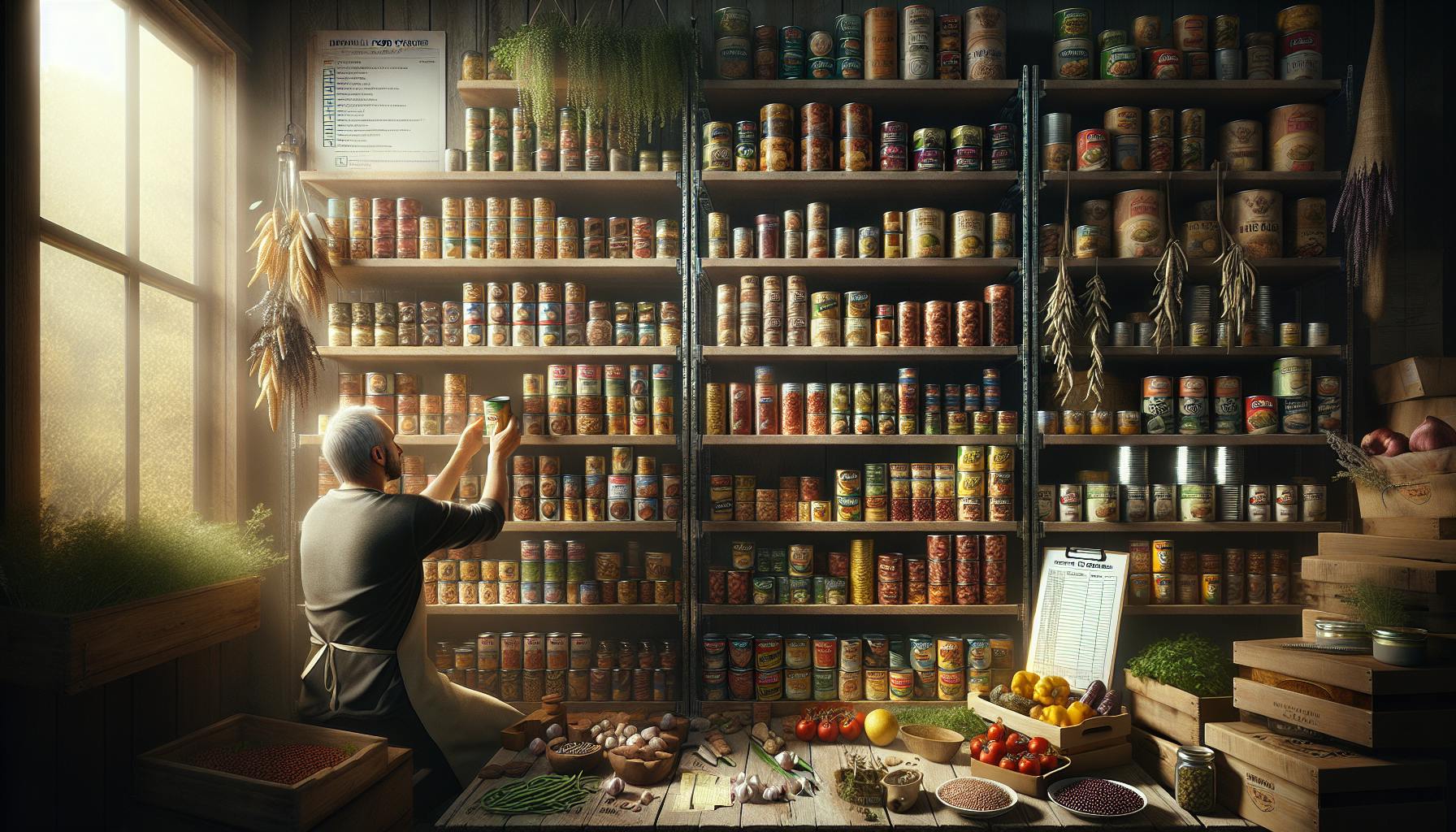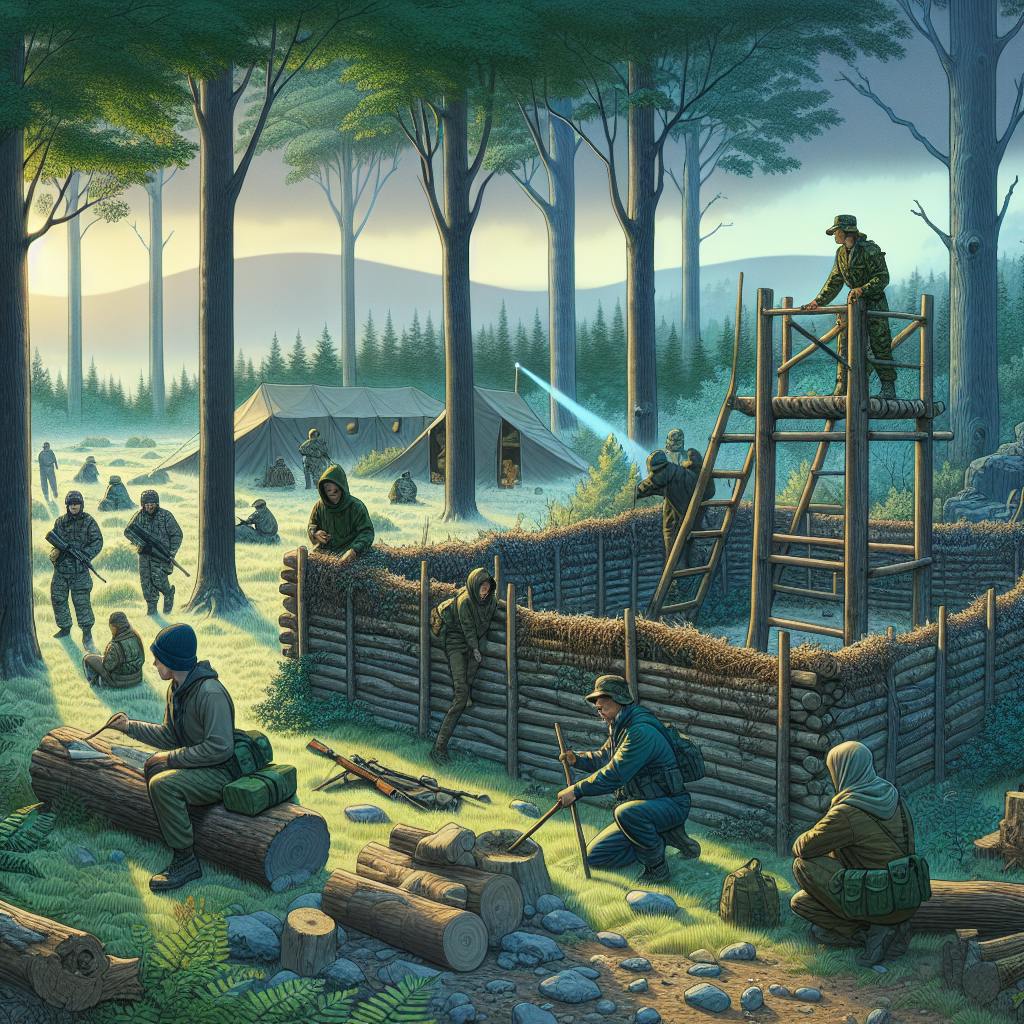Introduction to Selco and His Survival Philosophy
Selco survived the brutal Balkan war in the 1990s and now shares his first-hand experience surviving a long-term, widespread collapse to teach everyday people practical survival skills. Growing up middle-class in the Balkans, Selco's world was turned upside down when war erupted in his region. He endured extreme violence, deprivation, and traumatic loss during the nearly two year siege of his city. These harrowing experiences shaped Selco's survival philosophy which focuses on developing key skills like basic self-reliance, securing food/water, medical abilities and most importantly, mental preparedness.
Selco stresses the importance of flexibility, adaptability and improvisation with available resources in chaotic situations. He prepares people for the difficult reality of an extended collapse - the breakdown of social norms, horrific violence, traumatic loss, and morally ambiguous choices with no right answers. Selco's sober warnings empower people with practical skills and resilient mindset to endure and bounce back despite severe hardships.
Selco's Background and War Experiences That Shaped His Philosophy
Selco grew up in a middle-class family in the Balkan region of Europe. When brutal ethnic conflicts erupted in the 1990s during the breakup of Yugoslavia, Selco was a young man living in one of the many cities ravaged by the Yugoslav Wars. As tensions exploded into armed conflict, Selco's city became the site of a horrific siege lasting nearly two years. Surrounded by fighting, the city's residents faced severe deprivation - widespread shortages of food, water, medicine and other basic necessities. Infrastructure collapsed, leaving people without utilities, communication systems or medical care. Death from bombs, snipers, disease, starvation and violence became commonplace.
During the siege, Selco witnessed horrific atrocities as social order broke down completely. He endured the tragic deaths of loved ones and made difficult choices just to survive day-to-day as supplies vanished. Despite growing up in a peaceful society, he was forced to reckon with the darkest sides of human nature amid the chaos and lawlessness. These extremely traumatic experiences shaped Selco's worldview and ingrained the value of survival preparedness.
Core Principles of Selco's Survival Philosophy Forged Through War
Drawing from his first-hand experiences, Selco focuses his philosophy on practical survival skills for the average person. He stresses the need for proper physical, mental and emotional preparation before disaster strikes. This includes developing key skills like basic self-reliance, securing food/water, medical abilities and understanding survival psychology.
Flexibility, adaptability and innovation are cornerstones of Selco's approach. When systems and order collapse, readiness to improvise solutions with available resources makes the difference between life and death. Selco also highlights often overlooked survival aspects like fostering community connections, coping mentally with traumatic loss and moral compromises.
By combining technical skills with psychological resilience, Selco's advice aims to prepare everyday people to endure and survive even the most chaotic and challenging circumstances. His philosophy is forged from the darkest days of war.
Key Survival Skills to Cultivate Now According to Selco
Selco views certain skills as essential for increasing your chances of surviving various emergencies. He advises starting to develop them now within your normal life routine. Some take significant time and dedication to cultivate. Consistent practice will prepare you both logistically and mentally to rely on these skills if ever needed.
Basic Self-Reliance and Resourcefulness
Selco emphasizes basic skills that foster independence and ability to improvise solutions with limited resources. Examples include:
-
DIY skills like basic mechanics to repair machines, sewing to mend clothing, welding to fabricate or repair metal items, carpentry for building and repairs.
-
Learning to creatively repurpose everyday items for new, unconventional uses to aid survival. For example, using plastic bottles to make lanterns.
-
Stockpiling materials like duct tape, wire, plastic sheeting that can aid makeshift repairs and inventive survival solutions.
-
Practicing self-reliance in your daily routine - make/repair things yourself versus always buying replacements.
Cultivating creative resourcefulness and a mindset of self-sufficiency is key. View everyday problems as opportunities to improve your self-reliance rather than immediately seeking others’ help. Start mending clothes versus replacing them. Try fixing appliances before calling a repair person. Build your confidence in improvising solutions.
Securing Food and Water
Securing adequate food and water is an obvious priority in a collapse. Selco stresses layered preparedness:
-
Stockpile emergency food supplies like rice, beans, canned goods. Store water filtration tools like LifeStraws.
-
Learn skills for procuring food like hunting, trapping, fishing, identifying edible plants. Plant a garden to gain experience.
-
Practice techniques for preserving food like smoking meat, salting fish, pickling vegetables, canning fruits.
-
Set up rainwater collection systems. Locate natural sources of surface water in your area.
-
Know various methods for purifying found water like boiling, filtration, bleach to avoid disease.
Take small steps like planting a vegetable garden, fishing recreationally and gradually expanding your knowledge and self-sufficiency around food and water access.
Medical and First Aid Abilities
Medical care is often extremely limited or non-existent in prolonged emergencies. Taking charge of your health and safety will require new skills like:
-
Stock medical supplies for wound care, infections and addressing chronic conditions. Have bandages, antibiotics, prescription meds.
-
Learn first aid skills - stop bleeding with tourniquets, splint fractures, perform CPR and Heimlich maneuver.
-
Study herbal remedies as alternatives to pharmaceuticals. Grow medicinal plants.
-
Obtain essential prescription medications you rely on. Store extras if possible.
-
Consider learning skills like suturing, casting broken bones, delivering babies. Watch online tutorials.
Achieving competency takes diligent study and hands-on practice. But building your medical and first aid knowledge can help safeguard your family’s health when professional care is unavailable. Start learning first aid through reputable courses online or in your community.
How to Mentally and Emotionally Prepare for Survival
Surviving a major disaster requires more than just technical skills. Selco considers mental preparation just as crucial - yet often overlooked. He provides tips on developing resilience along with better understanding the psychology of survival.
Cultivating a Survival Mindset
Selco stresses the importance of adjusting your mindset to the harsh realities of collapse before it occurs:
-
Letting go of normalcy biases. Don't cling to what seems “right” but adapt to the situation.
-
Developing vigilance - constantly assess risks and changes in your surroundings.
-
Preparing for fluid social norms and lawlessness. Expect riots, violence and anarchy.
-
Strengthening resolve and willingness to do whatever it takes to survive. Overcome squeamishness and comforts.
-
Focusing your will on survival rather than luxuries or non-essentials.
By taking steps to cultivate this mindset today, you can better manage the psychological impact when crisis strikes. Run practice drills to rehearse survival thinking.
Understanding Psychology of Survival
In addition to technical preparedness, expect and brace for the emotional trauma and difficult choices inherent to survival:
-
Prepare for the shock and speed of sudden change - it disorients and paralyzes the unprepared.
-
Plan for emergent social dynamics like paranoia, distrust between people, panic, mob mentality, confusion.
-
Anticipate having to accept horrific violence and the tragic loss of loved ones. Mourn now before it happens.
-
Be ready to make morally ambiguous choices where all options are bad - focus on survival.
-
Don't underestimate the critical importance of community, empathy and compassion for mental resilience.
Foreseeing and accepting these difficult realities will strengthen your ability to cope and endure. Discuss preparation with family and community too. Lean on your support system.
Staying Safe in a Collapse - Security Precautions
In a disaster scenario, safety and security are threatened in ways we’ve never experienced. Selco provides suggestions to better protect yourself and loved ones.
Assessing and Reducing Risks
Start by taking stock of potential dangers in your current environment:
-
What nearby areas or infrastructure could become conflict zones attracting desperate people?
-
What routes and resources might be contested or blocked off by gangs?
-
Are you currently at risk of attracting attention or being targeted based on location or resources?
-
Develop contingency plans and escape routes for various emergency scenarios. Be ready to bug out at the first sign of danger.
-
Foster connections locally for mutual aid and security. Avoid external dependence on government or others.
-
Stay mobile and avoid commitments that limit maneuverability like mortgage debt.
Constantly assessing dangers and reducing risks will enable you to react quickly as conditions shift. Adapt like flowing water.
Fortifying Physical Security
Selco advises creating layered physical security focused on monitoring, controlling access and compartmentalization:
-
Establish perimeter security with alarms, early warning systems and deterrents like fences, thorn bushes and spiky plants.
-
Safely block access, channel threats into exposed areas, and designate secure safe rooms. Eliminate hiding places around your location.
-
Use motion-activated lighting, trail cameras, traps, guard dogs, etc. for 24/7 monitoring around entry points.
-
Ensure secure doors, reinforced windows, sturdy exterior fences and gates.
-
Have hidden safe rooms, multiple escape routes, panic areas to evade intruders.
Upgrading security now builds experience to further fortify your location when SHTF. Do it subtly to avoid attracting attention. Tell others you're just gardening.
Selco's Advice for Bugging Out Safely
If forced to flee rapidly, preparation will enable you to bug out more safely. Selco provides suggestions on gear, planning and adapting psychologically.
Bug-Out Bag Must-Have Items
Your bug-out bag should contain:
-
Food, water purification, first aid, hygiene items, multipurpose tools, cash, clothing, camping gear
-
Navigation aids like maps, compass, signal mirror
-
Emergency communication devices, portable solar charger
-
Fire starting tools like lighter, matches, tinder
-
Concealable self-defense items like pepper spray, folding knife
-
Copies of important documents and contacts backed up offline
-
Small comfort items to boost mental resilience while on the move
Keeping bags prepared and ready avoids rushing unprepared into perilous conditions if evacuating at the last minute. Make a checklist of essentials to pack so you don't forget anything critical.
Selecting a Remote Bug-Out Location
Consider factors like:
-
Remote areas near natural water sources and wildlife for food but away from major roads or towns
-
Locations allowing for secure shelter, concealed observation of threats, and camouflage from prying eyes
-
Regions you can reach within one tank of gas and on backroads if main highways are blocked
-
Areas with survival resources but low population density
-
Landscapes offering favorable climate, terrain and resources year-round
Have at least two pre-scouted bug-out zone options and memorize routes there as contingencies. Rehearse your evacuation trip.
Executing a Safe and Undetected Bug-Out
When forced to flee, follow procedures to maximize safety and stealth:
-
Gather only essential bug-out items to travel light and evade notice
-
Cover your tracks and mask signs of hasty departure
-
Depart late at night using pre-planned escape routes to avoid observation
-
Travel on foot or backroads whenever possible, avoiding major highways
-
Remain constantly alert and avoid being seen when nearing populated areas
With preparation and rehearsal, you can retreat under the cover of darkness and evade chaotic population centers clogged with refugees.
Conclusion and Final Takeaways from Selco's Survival Philosophy
By studying Selco’s first-hand experience and advice forged in war, anyone can become better prepared to survive disasters. Develop key skills like self-reliance, securing food/water and medical care. But just as crucial is cultivating a resilient mindset to handle the emotional and moral challenges of collapse. Use Selco’s tips to start implementing layered preparedness specific to the risks you face. With practical skills and mental toughness, you can endure and bounce back from severe hardships through flexibility and determination to survive at any cost.
Selco's top 10 tips in summary:
-
Cultivate self-reliance and resourcefulness in your daily life.
-
Stockpile survival supplies like food, water, medical items.
-
Learn hands-on skills like gardening, fishing, first aid.
-
Mentally prepare for social breakdown and violence.
-
Fortify your home security discreetly over time.
-
Assess risks continuously and have bug-out contingencies ready.
-
Pack bug-out bags for each family member in case rapid evacuation is needed.
-
Select remote bug-out locations in advance and know routes.
-
Execute an undetected bug-out at night using backroads.
-
Stay vigilant, adaptable and focused on survival above all.
Start your preparedness journey today. Gain skills and knowledge to survive whatever comes your way. Visit WeLovePrepping.com for more prepping advice and resources recommended by Selco. With grit and the will to endure, you will come through even the darkest days.


